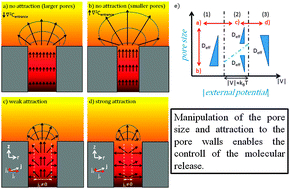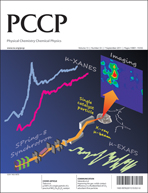Modus operandi of controlled release from mesoporous matrices: a theoretical perspective†
Abstract
The ability to alter the rate at which molecules are released from pores by manipulating structural and surface properties of mesoporous materials was demonstrated consistently in numerous studies. Yet an understanding of the role of pore size, attraction to pore walls and of the release mechanism in general has still been elusive. Here we address these issues by means of a simple 2-dimensional (2D) model of ordered porous matrices with various pore sizes and strengths of molecule–wall attractions. The system dynamics are described with a 2D Fokker–Planck equation which is solved numerically for various cases of initial concentration distribution. We show that the interactions with walls play an essential and fundamental role in controlled release from mesoporous materials, regardless of whether they are additionally functionalized or not. They affect the relative cross-section where the local flux has a non-vanishing axial component and accordingly the effective transfer rate into bulk solution. Furthermore the inclusion of molecule–wall attractions into the theoretical description turns out to be the missing piece of the puzzle that explains the origin of the experimentally observed dependence of release kinetics on the pore size. Our results enable us to reinterpret existing experimental findings and provide a revised view of the mechanism of controlled release from ordered porous matrices.


 Please wait while we load your content...
Please wait while we load your content...